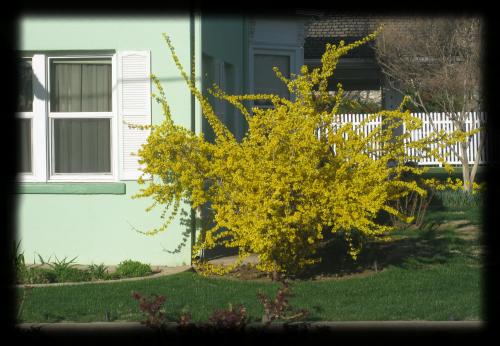|
Placing the right landscaping-bushes in the right places
By selecting the right variety and color of landscaping-bushes attention can be drawn to, or taken away from a specific area of the landscape. Most of the time we want the flora to blur the lines between hardscape and the home, but, occasionally attention needs to be drawn to the location of the front door or a pathway. A good artist can direct your eyes from one place to another with the right plant placement. 5 categories of plant material
Cornerstone landscaping-bushes will be larger than the others, the use of these will soften the edge of the home or structure by blurring the abrupt height difference between the structure and the landscape grades. Marker bushes will make it apparent where the entry points and pathways are in the overall design of a landscape. They will invite you to the entry or porch. These points can also be accompanied by path lighting or the marker bush itself may be lighted with
landscape lighting
to help focus or direct the eye to the entry point or pathway in a landscape. Have you ever gone to a home where you can't find the front door? Good planning with the plant design will make the entry point obvious and inviting. Medium sized ornamental shrubs are used to fill in the gaps between cornerstone bushes and marker landscape-bushes. They are also used to create a mass of a given texture behind a boulder or even in the wide open under a large tree. Generally, we use groups of the same variety to create a large mass of that variety. I like to use odd numbers of landscaping-bushes to do this, ie. groups of three or five or seven. These varieties might be 3-4 feet tall if they are 10-12' away from the entry point, or 1-2' feet tall if they are closer to an entry or walkway. Flowers and ground covers usually belong near the borders and walkways or in front of a decorative boulder. The word to remember is cascading. Flowers and ground covers are the lower height in the cascade of heights in a landscaping-bushes design. I like to use a group of flowers that will yeild colors throughout the season. Additionally I usually surround that group of flowers or ground cover with a heavy mulch. This helps provide a canvas which will make the flowers more visible. Generally Black mulch surrounding the flowers will do the job well.

So, get to know the different landscaping bush types you're thinking of using. Study the type of flowers they produce, what time of year they flower, and what different colors the leaves change to during spring and fall.

Of course some plants and trees are deciduous and others are
evergreen
. That's an important factor also, not only for the look but also for the maintenance issues.

Another concern may be creating shade in the summer while still allowing sunlight in during the winter months. EXAMPLE: The south side of a home may have lots of windows. during the winter months the home could potentially warm up nicely. But during the summer, trees on the south side that have leaves could create shade in the same area.

Flowering bushes add color and variety to your landscape. Even
desert plants
have variations of color to add interest. These flowering cactus are red in the winter and have the most brilliant yellow flowers in the late spring. If you will be using a variety of plants you can enjoy different looks at different times of the year. For example the picture above has some variation at the time of the photo but later on in the summer the bush in the center
(desert bird of paradise)
will have leaves and brilliant yellow flowers. By educating yourself on the different flowering cycles and color changes that plants in your area have, you can place the landscaping-bushes in your landscape plan to add interest and contrast throughout the year.







Flowering landscaping-bushes top of page
|

